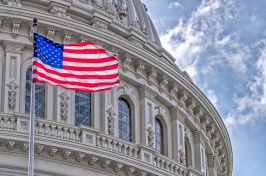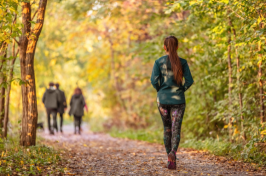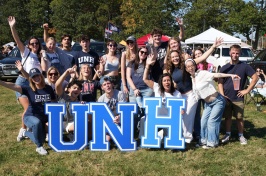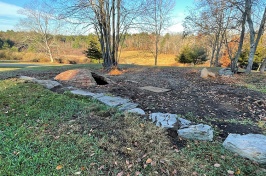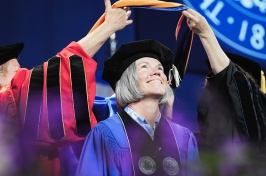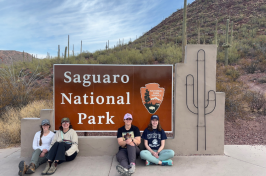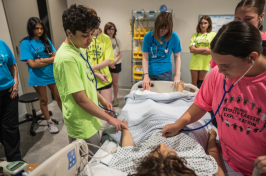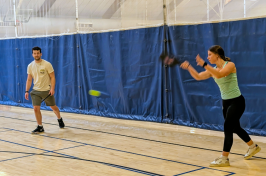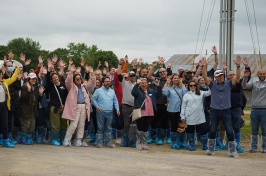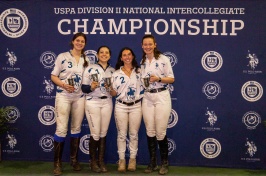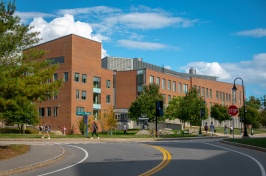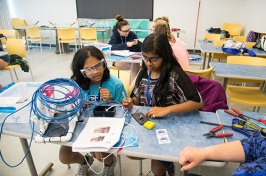No Chestnuts to Roast on an Open Fire
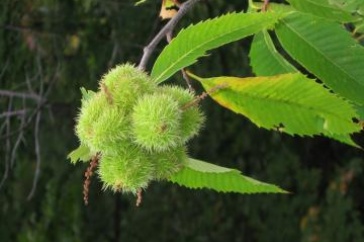
American chestnuts are housed in the velvety lining of a prickly bur, generally three nuts to each bur. Credit: The American Chestnut Foundation
DURHAM, N.H. - New Englanders searching the woods for chestnuts to roast on an open fire this holiday season will be hard pressed to find a mature American chestnut tree bearing nuts. American chestnut has been under attack for a century from a persistent chestnut blight that has killed trees from Georgia to Maine and west to the Ohio River Valley.
However, a potentially blight-resistant American chestnut tree plantation planned for the University of New Hampshire may one day mean that the tree that was once prominent in eastern North America -- numbering in the billions -- may again be common in this region's forests.
UNH is in the initial stages of establishing an American chestnut tree plantation at Kingman Farm in Madbury. The effort is a joint project between the NH Agricultural Experiment Station and The American Chestnut Foundation. Steve Eisenhaure, land use coordinator with the UNH Office of Woodlands and Natural Areas, is overseeing the one-acre project. UNH plans to plant 350 trees at the farm.
"Chestnut trees still can be found in our area, but they no longer reach the mature stage because of the blight. There are ecological implications with the fact that the chestnut is gone from our forests," said Eisenhaure, who manages UNH's 3,500 acres of wooded area.
Chestnut blight, a fungal disease, has hit hard American chestnuts and was first seen in eastern North America about 100 years ago. Chestnut blight is believed to have been accidentally introduced into North America on imported Asiatic chestnut trees in the late 1800s and was first identified as an exotic pathogen in 1904.
"We are planning to plant trees that have been crossbred with blight-resistant strains of the tree. This is the first step in developing an area that our researchers in the future can study and draw material from," Eisenhaure said.
Researchers will plant American chestnuts that have been bred to incorporate the blight resistance of the Chinese chestnut, while retaining as much of the American chestnut's natural character as possible, using the backcross method of breeding. This method takes advantage of the Asiatic chestnut tree's resistance to chestnut blight but allows for the incorporation of more American chestnut genetics through multiple generations of breeding. By introducing the blight-resistant genes from the Chinese chestnut into the American chestnut, and then repeatedly crossbreeding subsequent blight-resistant American chestnuts with additional native American chestnuts, The American Chestnut Foundation has developed a population of trees that are between 94 and 97 percent American chestnut and potentially blight-resistant enough to survive long-term in the forest. These trees took more than three decades of careful breeding to produce and are what will be planted at Kingman Farm.
The American chestnut tree plantation will be UNH's fourth research plantation at Kingman Farm. The farm already has white pine seed, red spruce, and pitch pine plantations that are used by researchers with UNH and the U.S. Forest Service as well as for outreach and education.
According to Kendra Collins with The American Chestnut Foundation, American chestnut trees can start producing chestnuts anywhere from five to 15 years in age, depending on conditions.
"With American chestnut reintroduction on the horizon, we need to learn more about the best ways to get these trees back on the landscape. This project will help to inform those efforts and also involve students in planting, data collection and management. This is a long-term project, and it's important to engage the next generation of forestry and natural resource professionals," Collins said.
"The mission of the American Chestnut Foundation is to restore the American chestnut tree to eastern forests. This is a big restoration goal, and we can't do it alone. Partnerships, like this one we have established with UNH, are of great value to our program and to the success of American chestnut restoration," she said.
Formed in 1983, The American Chestnut Foundation has initiated a complex breeding program to transfer genes containing disease resistance from Asian chestnut species to American chestnut. Now supported by more than 5,000 members and hundreds of volunteers in 23 states, the organization is planting and testing offspring of those trees as it continues to build and improve its breeding population. With the aid of many partner organizations, the foundation is leading the restoration of an iconic species once on the brink of extinction.
Founded in 1887, the NH Agricultural Experiment Station at the UNH College of Life Sciences and Agriculture is UNH's original research center and an elemental component of New Hampshire's land-grant university heritage and mission. We steward federal and state funding, including support from the USDA National Institute of Food and Agriculture, to provide unbiased and objective research concerning diverse aspects of sustainable agriculture and foods, aquaculture, forest management, and related wildlife, natural resources and rural community topics. We maintain the Woodman and Kingman agronomy and horticultural farms, the Macfarlane Greenhouses, the Fairchild Dairy Teaching and Research Center, and the Organic Dairy Research Farm.
The University of New Hampshire, founded in 1866, is a world-class public research university with the feel of a New England liberal arts college. A land, sea, and space-grant university, UNH is the state's flagship public institution, enrolling 13,000 undergraduate and 2,500 graduate students.
PHOTOS AVAILABLE FOR DOWNLOAD
https://colsa.unh.edu/sites/colsa.unh.edu/files/canaannh.JPG
The NH State Champ American chestnut tree in Canaan, NH, the largest American chestnut in New Hampshire known to the VT/NH Chapter of The American Chestnut Foundation, as measured by diameter and height.
Credit: The American Chestnut Foundation
https://colsa.unh.edu/sites/colsa.unh.edu/files/BlightCankerMerrimackNH.JPG
An American chestnut in Merrimack, NH, that has been hit by chestnut blight canker.
Credit: The American Chestnut Foundation
https://colsa.unh.edu/sites/colsa.unh.edu/files/ChestnutBurs.jpg
American chestnuts are housed in the velvety lining of a prickly bur, generally three nuts to each bur.
Credit: The American Chestnut Foundation
https://colsa.unh.edu/sites/colsa.unh.edu/files/ChestnutLeaf.JPG
The leaf of an American chestnut tree.
Credit: The American Chestnut Foundation
http://www.acf.org/range_close.php
The natural range of the American chestnut.
Credit: The American Chestnut Foundation
-
Media Contact
Ruth Goodridge | The American Chestnut Foundation | ruth.goodridge@acf.org | 828-281-0047
Latest News
-
October 24, 2025
-
October 8, 2025
-
October 2, 2025
-
September 24, 2025
-
September 15, 2025









